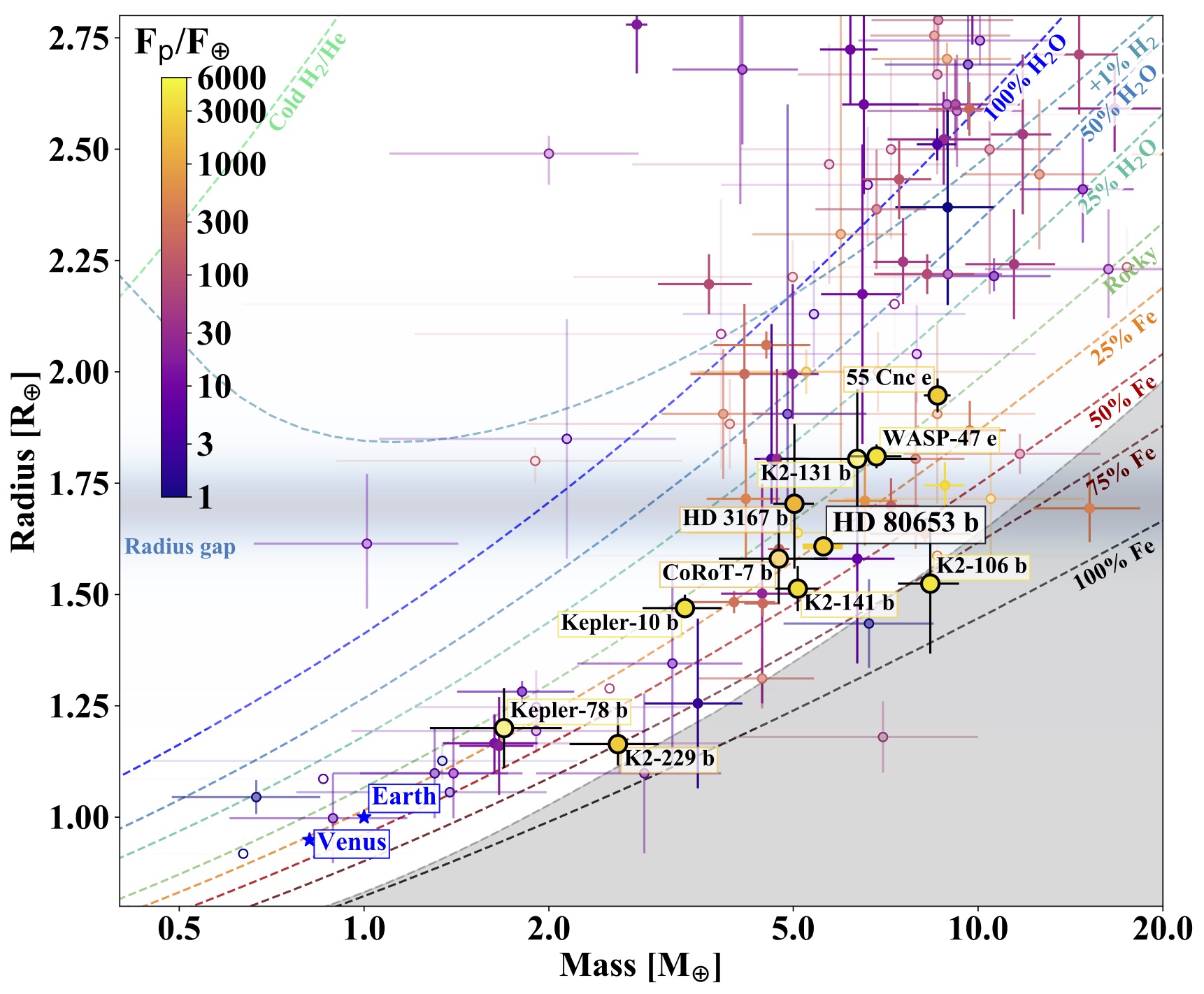HD 80653 b: an ultra-short period rocky super-Earth orbiting a solar type star
HD 80653 is a G2 star located at 109 parsecs (355 light years) from Earth. The Kepler spacecraft in the K2 configuration observed it during its 16th campaign, from December 2017 to February 2018. The accurate photometry of the NASA satellite allowed the discovery of one small transiting planet, with a radius of about 1.6 R⊕ and an orbital period of only 17.2 hours.
The new exoplanet can be listed then among the ultra-short period ones, a particular class characterized by periods shorter than one day and a composition similar to that of the Earth. Their origin is still unclear, different formation scenarios have to be taken into consideration. The sample of such planets is still poor and most Kepler and K2 USP candidates orbit stars too faint for precise radial velocity follow up.
Since HD 80653 is relatively bright (V=9.4), a team led by astronomers from INAF (Istituto Nazionale Astrofisica) was able to accurately determine the mass of the exoplanet orbiting it. Indeed, more than 100 radial velocity measurements were quickly collected over 6 months (from November 2018 to May 2019) with the high-resolution spectrograph HARPS-N installed at the Telescopio Nazionale Galileo. The monitoring was performed in the framework of the HARPS-N GTO (Guaranteed Time Observations) Consortium.
The spectroscopic data indicate that the planet could be a super-Earth having a mass at least 5.6 times that of the Earth. Combined with the planetary radius obtained from space photometry, this suggests a bulk density consistent with that of an Earth-like rocky composition.
The first author of the paper, Giuseppe Frustagli, PhD student at INAF-Osservatorio Astronomico Brera, emphasizes: "The discovery and characterization of HD 80653 b can bring us to a better understanding of this class of exoplanets. We have been able to put a constrain to its temperature and this seems to exclude the possibility of an in situ formation, favouring the migration scenario."
Moreover, HD 80653 still has an aura of mystery. The radial velocity measurements show a long-term trend, continuously increasing from the beginning of the observations. At the moment, we don't know if it is due to another planet, this time with a very long period, or to a stellar companion even further away.
Link to the paper: https://www.aanda.org/articles/aa/abs/2020/01/aa36689-19/aa36689-19.html

Caption: Mass-radius diagram of planets smaller than 2.8 R⊕. The data points are shaded according to the precision on the mass, with a full color indicating a value better than 20%.

